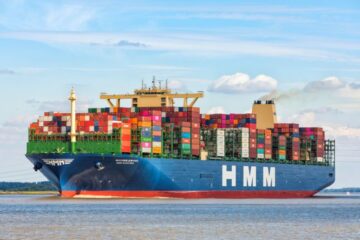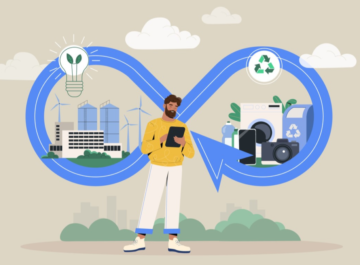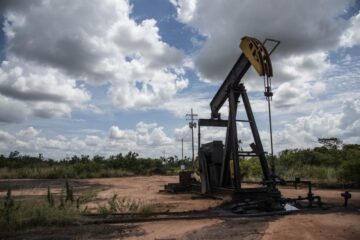
When you’re browsing your favorite online store, and it’s time to check out, how do you choose your shipping option? We’ve become experts at the money game, weighing express against standard, priority against ground, all the while hunting for that free shipping deal. The decision, for us, comes down to cost and time. But there’s an invisible variable we rarely consider, and it’s a crucial one: the carbon cost. The unseen environmental impact of our choice is mostly ignored, and it’s high time we shed some light on it.
Suddenly we have more questions than answers: What is the carbon footprint of our shipping choices? Why is this information not as readily available or as transparent as the price tag? This is a significant blind spot not just for consumers, but for shippers and carriers too. It’s more than just a lack of information; it’s a missed opportunity for conscious decision-making and potential industry transformation.
The Want-To-Know Carbon Cost
Modern consumers are increasingly conscious of their environmental footprint. From opting for reusable shopping bags to choosing products with less plastic packaging, they show an increased willingness to make lifestyle changes for the sake of the planet. Yet, when it comes to shipping, they often lack the information needed to make environmentally conscious decisions. Without transparency about the carbon cost, consumers are left in the dark.
Research suggests that transparency doesn’t just influence purchase decisions — it can also command a higher price. A study conducted by Feucht and Zander in 2017 demonstrated that the presence of a carbon label on a product significantly increased its purchase probability. The investigation, spanning six European countries, also revealed consumers’ willingness to pay a price premium of up to 20 percent for products bearing a carbon label.
This willingness to pay more for transparency in carbon impact highlights the increasing value placed on environmental responsibility in the marketplace. Not only can environmental transparency enhance their reputation as a socially responsible brand, but it can also positively impact their bottom line. Shippers and carriers that provide transparent carbon cost information stand to gain a competitive advantage in an increasingly environmentally conscious market.
The Need-To-Know Carbon Cost
You might imagine that established carriers in the industry would have a precise understanding of the environmental costs of their shipping options. But unfortunately, that’s not the case. Not because it’s too complex to calculate, but largely because they lack a robust incentive to do so. The current logistics networks are intricate and composed of various interconnected services. Each segment, be it sorting operations, linehaul lanes, or final-mile delivery stations, has its unique environmental impact.
The incentive structure of the industry, however, tilts towards profit maximization rather than carbon minimization. Carriers might generate more financial benefit when consumers opt for high-carbon, express shipping methods. Thus, there’s a gap between what’s profitable and what’s sustainable, leading to a lack of transparency and an undervaluing of the true environmental cost.
Further, traditional logistics models and under-utilized transportation make it even more challenging. The conventional method often involves unnecessary routes, multiple handling of the same packages, and inefficient use of space, all contributing to a larger carbon footprint. Identifying the exact environmental cost for each shipment within this complex system remains a significant challenge for the industry.
The Variables and Solutions for Visibility
That said, experts generally agree that, with today’s logistics, the faster the shipping method, the greater the environmental impact. But it doesn’t have to be that way.
The first solution lies in confronting inefficient transportation. The current reality often involves under-utilized trucks and a requirement for packages to be loaded and unloaded at multiple stops along the journey. Because the industry fails to harness the full potential of a truck’s capacity, it creates unnecessary carbon emissions. Enter the latest innovations in containerization: dynamic sorting and grouping of items directly on the loading dock. The ability to dispatch multiple groups of packages on the same truck mitigates the need for redundant touches and ensures the optimal utilization of each truck’s available space. By maximizing the efficiency of each vehicle, we can dramatically reduce the environmental impact of express shipping.
A second powerful solution to our environmental conundrum comes in the form of node-to-node shipping. The traditional hub-and-spoke model, which has governed logistics since the 1970s, often mandates indirect routes from point A to point B. This leads to packages diverting from the most efficient path to pass through a central hub, causing excessive fuel consumption and increased carbon emissions, particularly when a hub is experiencing congestion.
In stark contrast, a node-to-node model dynamically creates routes tailored to the specific contents of a shipment, enabling a more direct delivery path. This dynamic mesh network affords multiple route options, each eliminating the unnecessary detours inherent in the hub-and-spoke model. This way, we not only retain the speed and convenience that consumers have come to expect, but we can do so while markedly reducing the environmental footprint of each delivery.
Calling for Change: A Multi-Stakeholder Effort
Creating more efficient logistical solutions is just one piece of the puzzle. The broader challenge — and the more impactful opportunity — lies in enhancing transparency in the shipping industry. Quantifying and communicating the environmental savings from optimized shipping are crucial to empowering all stakeholders in the shipping chain — consumers, shippers, carriers — with the information they need to make environmentally responsible decisions.
This vision of the future, where choosing a shipping option is done on the basis of cost, speed, and carbon impact, is an achievable one. With enhanced transparency, each stakeholder in the e-commerce ecosystem can make a tangible difference in the environmental footprint of their shipping choices.
When consumers are informed about the carbon cost of shipping and the environmental impact of their choices, they are empowered to make decisions that align with their values. As the demand for such transparency grows, the industry must adapt to meet these evolving expectations. The need for a shift in the status quo is clear: the challenge now is to respond effectively to this demand for visibility and change.
Derek Szopa is the founder and chief executive officer of CloudSort.
- SEO Powered Content & PR Distribution. Get Amplified Today.
- PlatoData.Network Vertical Generative Ai. Empower Yourself. Access Here.
- PlatoAiStream. Web3 Intelligence. Knowledge Amplified. Access Here.
- PlatoESG. Carbon, CleanTech, Energy, Environment, Solar, Waste Management. Access Here.
- PlatoHealth. Biotech and Clinical Trials Intelligence. Access Here.
- Source: https://www.supplychainbrain.com/blogs/1-think-tank/post/38430-a-blind-spot-in-shipping-the-unseen-environmental-cost
- :has
- :is
- :not
- :where
- $UP
- 20
- 2017
- a
- ability
- About
- adapt
- ADvantage
- against
- align
- All
- along
- also
- an
- and
- answers
- ARE
- AS
- At
- available
- b
- bags
- basis
- BE
- because
- become
- benefit
- between
- blind
- Bottom
- brand
- broader
- Browsing
- but
- by
- calculate
- CAN
- Capacity
- carbon
- carbon emissions
- carbon footprint
- carriers
- case
- causing
- central
- chain
- challenge
- challenging
- change
- Changes
- check
- chief
- Chief Executive
- chief executive officer
- choice
- choices
- Choose
- choosing
- clear
- come
- comes
- communicating
- competitive
- complex
- composed
- conducted
- congestion
- conscious
- Consider
- Consumers
- consumption
- contents
- contrast
- contributing
- conundrum
- convenience
- conventional
- Cost
- Costs
- countries
- creates
- crucial
- Current
- Dark
- deal
- decision
- Decision Making
- decisions
- delivery
- Demand
- demonstrated
- difference
- direct
- directly
- Dispatch
- do
- Dock
- doesn
- Doesn’t
- done
- down
- dramatically
- dynamic
- dynamically
- e-commerce
- each
- ecosystem
- effectively
- efficiency
- efficient
- eliminating
- Emissions
- empowered
- empowering
- enabling
- enhance
- enhanced
- enhancing
- ensures
- Enter
- environmental
- environmentally
- established
- European
- European Countries
- Even
- evolving
- executive
- Executive Officer
- expect
- expectations
- experiencing
- experts
- express
- fails
- faster
- Favorite
- financial
- First
- Footprint
- For
- For Consumers
- form
- founder
- Free
- from
- Fuel
- full
- future
- Gain
- game
- gap
- generally
- generate
- governed
- greater
- Ground
- Group’s
- Grows
- Handling
- harness
- Have
- High
- higher
- highlights
- How
- However
- HTTPS
- Hub
- Hunting
- identifying
- imagine
- Impact
- impactful
- in
- Incentive
- increased
- increasing
- increasingly
- industry
- inefficient
- influence
- information
- informed
- inherent
- innovations
- interconnected
- intricate
- investigation
- invisible
- involves
- IT
- items
- ITS
- journey
- jpg
- just
- just one
- Label
- Lack
- largely
- larger
- latest
- leading
- Leads
- left
- less
- lies
- lifestyle
- light
- Line
- loading
- logistics
- make
- mandates
- Market
- marketplace
- maximizing
- Meet
- mesh
- Mesh network
- method
- methods
- might
- minimization
- missed
- model
- models
- money
- more
- more efficient
- most
- mostly
- multiple
- must
- Need
- needed
- network
- networks
- now
- of
- Officer
- often
- on
- ONE
- online
- online store
- only
- Operations
- Opportunity
- optimal
- optimized
- opting
- Option
- Options
- or
- our
- out
- packages
- packaging
- particularly
- pass
- path
- Pay
- percent
- piece
- placed
- planet
- plastic
- plato
- Plato Data Intelligence
- PlatoData
- Point
- potential
- powerful
- precise
- Premium
- presence
- price
- priority
- Products
- Profit
- profitable
- provide
- purchase
- puzzle
- Questions
- rarely
- rather
- RE
- readily
- Reality
- reduce
- reducing
- redundant
- remains
- reputation
- requirement
- Respond
- responsibility
- responsible
- retain
- reusable
- Revealed
- robust
- Route
- routes
- s
- Said
- sake
- same
- Savings
- Second
- segment
- Services
- shed
- shift
- Shipping
- Shopping
- show
- significant
- significantly
- since
- SIX
- So
- socially
- solution
- Solutions
- some
- Space
- spanning
- specific
- speed
- Spot
- stakeholder
- stakeholders
- stand
- standard
- stark
- Stations
- Status
- Stops
- store
- structure
- Study
- such
- Suggests
- sustainable
- system
- T
- TAG
- tailored
- tangible
- than
- that
- The
- The Future
- the information
- their
- There.
- These
- they
- this
- Through
- Thus
- time
- to
- today’s
- too
- touches
- towards
- traditional
- Transformation
- Transparency
- transparent
- transportation
- truck
- Trucks
- true
- understanding
- unfortunately
- unique
- unnecessary
- us
- use
- value
- Values
- variable
- variables
- various
- Ve
- vehicle
- visibility
- vision
- Way..
- we
- weighing
- What
- What is
- when
- which
- while
- why
- Willingness
- with
- within
- without
- would
- yet
- you
- Your
- zephyrnet












